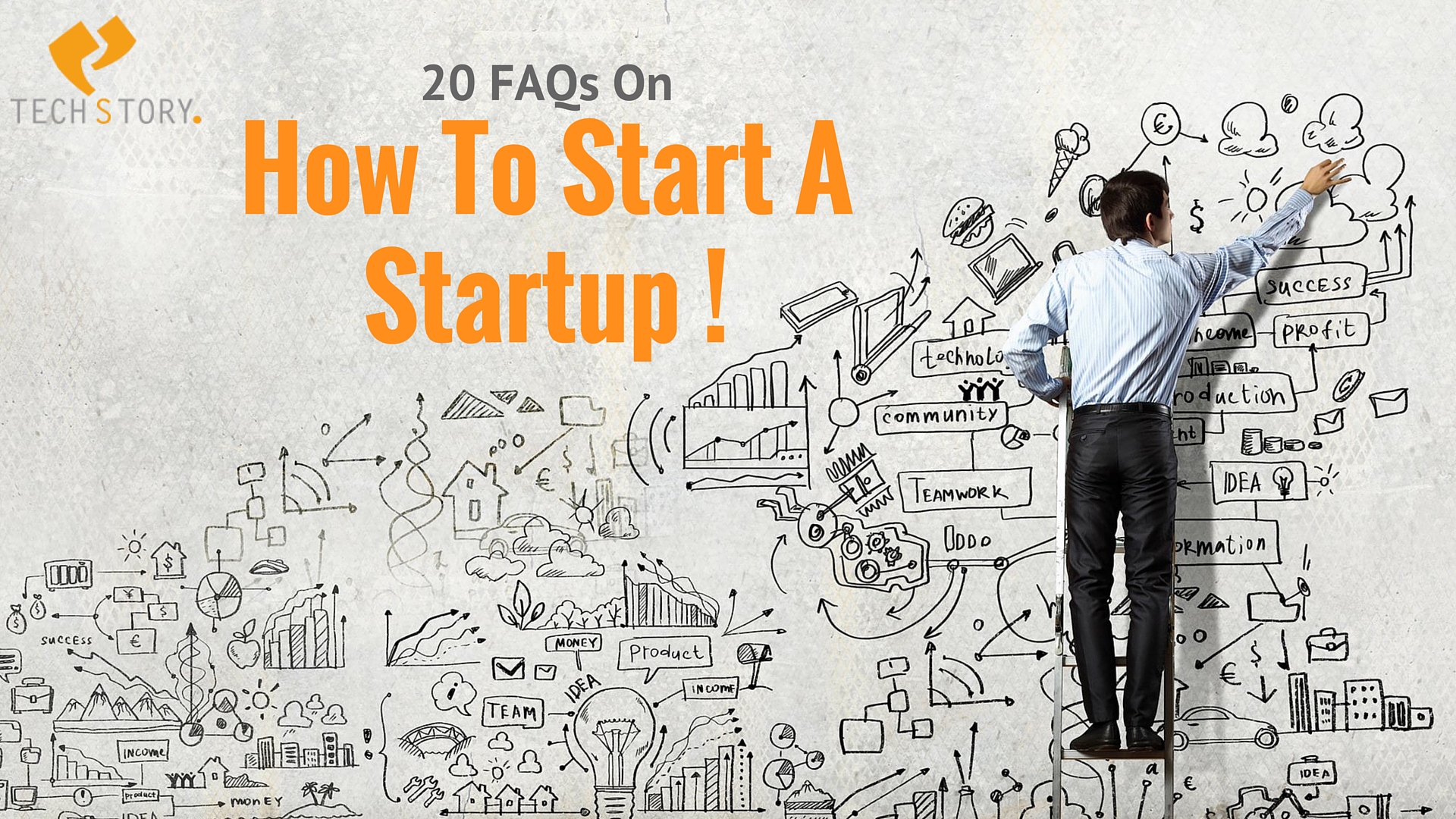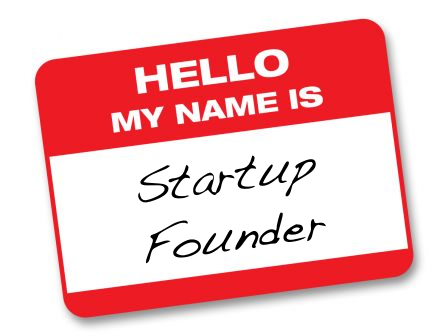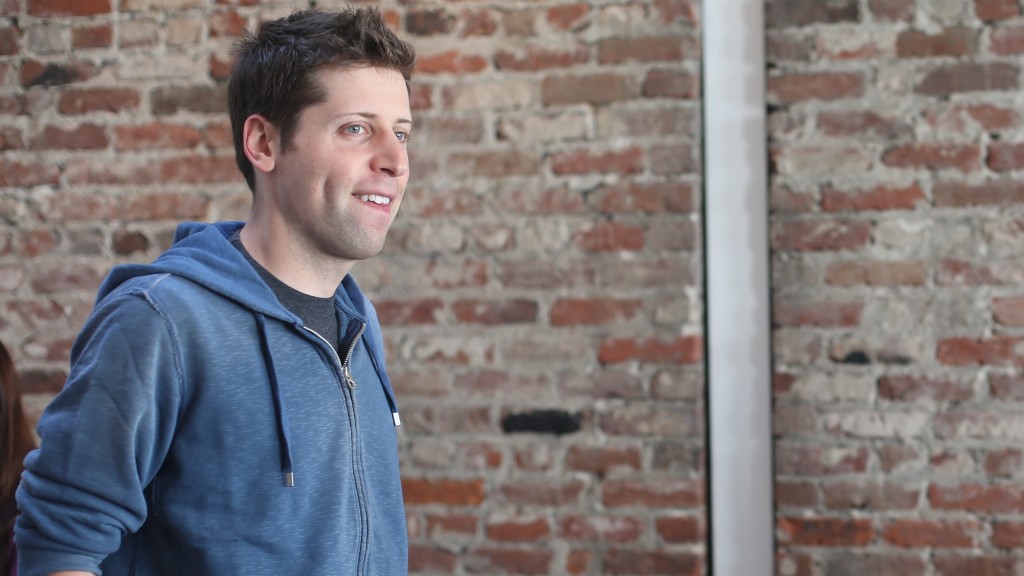
“Every startup need not become an unicorn, but every unicorn must’ve started as a startup”
Believe me or not, but that’s how it all started (up). If you look at successful startups that are ruling the tech world, all of them must’ve started because of a particular pain point that an individual faced and these individuals have taken the cloak of an entrepreneurs and are trying to save the world out there from facing similar problems. But sometimes when you take first foot step in the untrodden path of entrepreneurship, you feel left in the dark and even small breadcrumbs in your path would help you find light at the end of the tunnel.
This was the idea behind “How To Start A Startup !” Great pieces of advice delivered by greater people can be found spread through out your world wide web and this Stanford Universities’ lecture series by Y Combinator is one of those complete guide on entrepreneurship from successful entrepreneurs, investors and mentors. The series can be seen fragmented into 20 individual video session, but if you want to call it a complete guide then it should be available on one single link. Isn’t it? So here’s everything you need to know on how to start a startup !
1. How To Take Make An Idea Into A Product?

Sam Altman, President of Y Combinator talks about the criticality of the Idea and the Products, how to perceive them and how to drive your vision and mission of the start-up around your idea. He also talks about when one should start-up and how the growth of a start-up is dependent on the market size and most of all how student life is ideal for starting-up.
Dustin Moskovitz, the co-founder of Facebook, Asana and Good Ventures giving his insights on Why you should start a Start-Up? He breaks the stereotypes of an entrepreneur’s life portrayed in the media as being rich and glamorous and explains the reality of being an entrepreneur.
2. What Is Your Role In Motivating Your Team To Execute Well?

Sam Altman states that a good team plays a significant role in determining the future of your startup, and hiring a team begins as early as finding your co-founder. The mistake that many start-up founders make is that sometimes they approach their acquaintances as their co-founders. It is important to share a history with your co-founders that might help you through difficult times. If you don’t find a suitable co-founder then it’s better to go solo, but remember company with at-least two founders looks always appealing for both consumers and investors.
Execution plays a major part in a startup founder’s responsibility, as your entire team looks up to you, and eventually your execution becomes the work culture for the startup. This is one of the major aspects that determine the growth and momentum of a start-up.
3. Do You Think You Can Start A Startup?

Paul Graham the co-founder of Y Combinator, compares how a startup is more like a skiing course, and gives a list of counter-intuitive stuffs that we have to remember to prevent our existing instincts from leading us astray. There’s one place where our intuitions become right, that’s when we’re dealing with people, be it as engineering students or as business professionals.
Mark Zuckerberg inspite of being a complete rookie in startups, created mutli billion dollar company all because he was able to cater to the needs of his users. The problem that most first time entrepreneurs do is that they follow every fundamental requisite for starting a startup, but fail to do one thing that is essentially important that is to make something important.
4. How Do You Grow From Zero Users To Million Users?

Adora Cheung, founder of HomeJoy shares directions on things you should NOT do while growing your user base (with examples from Homejoy), so that you can eliminate those from your growth strategy and come up with good strategy for yourself. The noob approach typically involves building a product in secret and then market your product in an exclusive product launch. What your product lacks then would be the feed backs from the users, which is a basic criteria for other users to check it out. After days of waiting, we eventually end up buying users (if you have good bank balance) and then finally giving up on the product.
There have been contradicting views on startup founders coming from a different industry give a better solution to the problem, but there are also a few drawbacks to it. Better solutions are associated to better ideas about the problem in hand, and this idea comes only when the founders have some experience in the industry that they are going to cater to, this will help you understand the minds of your customers and create better experiences for them.
It is essential to build a minimum viable product for your launch, too many features in the beginning, would make your product look complicated for first time user and impacts your user base. Typically, the first few users of a product would be you, and people associated with you, beyond that you can approach online communities, local communities, mailing lists, etc.
Once you grab your first few customers, you need to get their feedbacks (online and offline), which are essential in growing the quality of your product/service and the quantity of your user base. Customer retention number is good metrices of honestly determining the performance, as you build new features the numbers must go up, else you need to figure out new marketing strategies.
5. How Do You Deal With Competition?

Peter Thiel, a well known entrepreneur and investor, discusses the strategy and competition. The basic idea of when you start a company is to consider what makes a business valuable. In order to become a monopoly, you cannot start with a giant market right from day one; but start with domination of a small market and expand from there in concentric circles. In contrast to the prevailing idea that the first mover has an advantage, in some ways it is the last mover or the last mover in a category that has the value.
And it is hard to pin point one single formula to become a monopoly. He explains how growth rates are overvalued and durability is undervalued with practical examples. Once you have a breakthrough in technology, it is the constant advancements or more specifically the multitudes of updates to your technology that is going to get to a place where your competitors cannot catch up. Competition does make you better at whatever it is that you’re competing on. It often comes at a tremendous price where you stop asking bigger questions about what’s truly important and truly valuable.
6. What Do You Think Matters Most For Growth?

Alex Schultz one of the premiers in Growth Strategy, who has played a key role in Facebook’s popularity as the Vice President of Growth. As you’re brainstorming what matters most, try to brainstorm more on the importance of customer retention and what happens if the customer retention rate falls in line with the asymptote and how do we solve this problem? It’s time to get back to the basics, how many of you still remember the fundamentals of startup? If you don’t a quick recap would be the four key points Idea, Product, Team, Execution and if you need to execute well (growth) then you need to ensure your product is great.
How do you determine retention rate? If you’re into marketing and sales (not just digital marketing) you must’ve come across the term market ratio and the emperical formula to calculate that, now apply the same and do some basic math on the differences you obtain then you’ll be able to figure out your retention rate.
You’ve got a good retention rate, now when do you decide it is time to scale and who takes care of the growth operations? For startups, it is essential that every individual operating considers themselves as the growth team including the CEO. Just like the retention rates, the targets or in his own words The North Star can be different for different companies, but the team has to operate in the direction for north star.
Every site you’ve registered so far was able to retain its customers because it created that magical moment for you, technically it was able to deliver the “unstated customer needs”. If you can deliver that magical moment for your customers, then they’ll stick to your site for a longer duration and eventually you’ll have a higher retention rate. It is not just the new users, but also optimising the growth for churning and resurrecting users. Lot of metrices are going to be correlated, and you need to pick the best one that aligns with your mission and vision as your guiding north star.
7. How To Build Products Users Love?
Kevin Hale, Partner, Y-Combinator (previously cofounder of Wufoo) talks about products and their influence on growth. Growth is the interaction of two characters “Conversion” and “Churn” and the gap between the two variables determine how fast you’re going to grow. First impressions are important for first time users just like going on a date. First moment for a user with your product are usually the First Email, Account Creation, Starting Interface, Login Link, Ad Link or First Support and all of these are opportunities to put a smile on your customers’ face.
Just like marriage, every product has to overcome the problems of money, kids (users), performance, time and others like competition and partnership. If we look at the users conversion funnel, it starts with website visitors of 100% and drops down to staying users at 0.3%. Software Development has to be injected with values like responsibility, accountability, humility and modesty which can be together termed Support Driven Development where everyone does customer support and you close the feedback loop between creators and support. The best part is that best overall solution is the easiest to achieve at any stage of a startup and without any investments. All it needs is humility and manners to gain market dominance.
8. Why Do You Have To Do Things That Don’t Scale?

Stanley the co-founder of Doordash explains with the origin story of Doordash to explain the above better. He states that in the beginning its all about testing your idea, trying to get it off the ground and test out if people actually wanted it. An important aspect of doing things that won’t scale is that it allows you to become an expert in your business. None of the fancy stuffs in terms of automation and technology matters in the beginning, because in the beginning its all about getting your product off the ground.
Walker Williams, CEO and founder of teespring states that one of the most fundamental advantages of being a startup is that you are able to do things that don’t scale. Things that don’t scale are unsustainable and won’t give you the millionth user, and they break usually when it comes to time like growth strategies. You always look for that one tip and trick to get that first user, in reality even for unicorns with dream growth curves it had been difficult to grab that first user.When it comes to your first users, don’t focus on ROI but focus more on growth. The next step after acquiring users is to make them your champions who talk about your product. It is going to require a lot of hand-holding, but those are very essential in the beginning of the growth, but never give your product for free.
It is enough for a single bad word of mouth to give a bad name for your startup, and ensure that you go that extra mile to solve the issue for the troubled customer. The customers who were originally frustrated tend to turn to strong champions, once you bite the bullet and solve their problems. When you’re growing don’t go for the unicorn numbers, but keep the next closest number as your target. Do things that don’t scale as long as you possibly can, the moment you give that up, you give up your competitive advantage.
9. How To Raise Money?

We might have bootstrapped in the beginning, but as time passes and the product scales, we realise that raising investments is the only possible solution to support the product. Every man’s dream would be the ability to understand the expectations of his better half and every entrepreneur’s dream would be to understand what the investors are expecting from you. Mark Andreessen, Ron Conway and Parker Conrad giving insights on every entrepreneur’s FAQ – How To Raise Money?
In Ron’s own words, the first aspect they look in an entrepreneur is “Is this person a leader?” because entrepreneurship is about leadership, and building a team that would contribute to your billion dollar vision fundamentally requires a good leader and a good communicator. To shed some lights on the venture model, Marc states that there are two concepts that are followed. Looking for an outlier company and invest in strength versus lack of weakness. One quick take away for the entrepreneurs would be learn to explain your product in one compelling sentence, that would let the investors imagine your product. Through out the journey, entrepreneurs need to be decisive, as the only way to make progress is to make decisions.
For every entrepreneur raising venture capital is going to be one of the most easiest way raising venture capital is the easiest thing a startup founder is ever going to do. As compared to recruiting engineers, selling to large enterprise, getting viral growth going on a consumer business, getting advertising revenue, and almost everything you’ll ever do is harder than raising venture capital.
10. What Is Company Culture?
 How to establish a company culture within the company so that the external customers can relate easily. To know that, we need to understand what is culture? For Airbnb’s Brian Chesky it is the Everyday core values and actions of each member of the team in pursuit of company mission. If you don’t have a good culture in the company, you can’t pursue your destiny. For every team break down, the reasons can be pointed out to 5 major factors viz., Trust, Conflict, Commitment, Accountability, Results. For effective results as output, you need to have a core company culture as your input.
How to establish a company culture within the company so that the external customers can relate easily. To know that, we need to understand what is culture? For Airbnb’s Brian Chesky it is the Everyday core values and actions of each member of the team in pursuit of company mission. If you don’t have a good culture in the company, you can’t pursue your destiny. For every team break down, the reasons can be pointed out to 5 major factors viz., Trust, Conflict, Commitment, Accountability, Results. For effective results as output, you need to have a core company culture as your input.
Culture cannot be in mere papers, it should be practiced regularly so that it becomes a part of us. The practice can be kick-started by incorporating your mission to your values, perform and also look out for the candidates who are not just technically fit but also culturally fit for your company. The main idea is to make it a daily habit, so that it stands to the true meaning of Culture.
11. What Are The Core Pieces Of Culture To Look For While Hiring?

Ben Silbermann, the founder of Pinterest, and Johnand Patrick Collison, the founders of Stripe sharing their general thoughts on culture, building the early team and the changes & evolution in culture while scaling up. Hiring is all about abstraction, when you hire your first ten employees you need to understand that you are actually hiring a hundred people because it is this first ten employees that are going to bring you the next ninety.
So, it is already obvious that your company’s growth depends on your initial employees particularly the first ten employees. Now, the real question is how do you hire your first ten employees? Again, there would be no particular answer for this, but the common goal should be that they must share your common goal.
The first ten employees usually are not the ones that can be found on LinkedIn, because it is you that they are unheard of, not the other way round. Hence, it is always better to have yourself be prepared with an elevator pitch not just for investors, but also for anyone you ever meet just to get them excited about your product, they could be your potential customer or your next employee.
12. Do You Want To Build An Enterprise Software?

Aaron Levie, the founder of Box and famous as the twitter comedic genius kick-starts with eye of the tiger. He begins with the quick background about the Box, just to understand the ecosystem when Box was created, major factors that changed in enterprise software today, that makes it possible to startup now and patterns that are ways to recognize and go build a startup by yourself.
To begin with Box was conceptualised in 2005 after realising that for some reason it was really hard to share files back then. It was either really expensive or really hard to move data around through corporate companies. Every market that has a significant change enabling factors was in an environment that is about to change in a very significant way and in the case of Box it was the cloud that was keeping the tech space on its heels. When they started out they were doing really good giving out free orders and having fun. But what they ran into was a common problem that, really, any startup runs into; their product was over serving the customers and under serving the enterprises and they had to any choose anyone path to lead from then.
A lot has changed in the enterprise scenario since then, for instances the need to personally install the software in every computer has been transferred to the cloud and also the cost has been reduced considerably so far. Another important change which would help to sell the enterprise software better is that the change has been from IT led to User led, that is, instead of approaching the IT team to implement a CRM you can move it via the Sales Executive as he is going to be the end user of the software.
There are only two moments of opportunity where a technology revolution will happen in an enterprise. The first is where raw materials change. So cost of computing goes down and they centralize and let people use it on demand. The second thing that can change, is the very people that these enterprises have to go after need new experiences at that enterprises product.
So in a world where enterprises are dealing with that kind of change, we are going to need new technology to help them create their business models, how they adapt to this disruption. This is why it’s such an amazing time to even start vertical software companies for industries. Right now every single industry is going through a business model and technology orientated disruption. Means they are going to need technology from start ups to help them work through this.
13. How To Be A Great Founder?

Who else can better explain how to be a great founder other than Reid Hoffman who has been helping the founders connect professionally. A founder is typically imagined as the Superman who has each and every skill in his utility belt that is better projected with a superlative adjective when addressing him. It’s things like, I can do product market fit. I am great at product, I am great at strategy, I am great at management. I can fundraise. I can do all of these skills and the thing you are looking for in a great founder.
Generally speaking you hope to have a couple super powers. Some things that are a unique edge to you, some things that are unique to the problem you are trying to solve, some things that will help you get an edge. And frequently it’s very hard to tell the difference between madness and genius because usually it’s the results that play out.
What is it that actually makes a great founder? Because it’s not actually that you score ten out of ten of these, you become the entrepreneurial olympian. So how many founders are required to have a great team? It is usually best to have two or three people on a team rather than a solo founder, because a good composition of a project and founders are likely to succeed, and the composition is usually two or three of them. If you have two or three founders, you can not only compensate for different skills but also for each others weaknesses.
The next question that needs to be addressed is the location of your company and it is one of the things that comes down to in thinking whether or not you are a great founder. Well the reason is, because of what great founders do is seek the networks that will be essential to their task. In order to be successful, you need to locate where the strongest networks are for the particular kind of thing that you are doing. So great founders will move to where the network is.
14. How To Operate Your Team?

Keith Rabois, the executive with the Midas touch is present to present the lecture on How To Operate ! Before we begin let us assume you have hired a bunch of relentlessly resourceful people, you have built a product that at least some people love, hopefully raised some capital, and now you are trying to build a company. You have been forging a product and now you are forging a company. Building a company is basically like taking all the irrational people you know putting them in one building, and then living with them twelve hours a day at least. It’s very challenging. Now there are some techniques for coping with that some people get good at it, some people don’t. But that’s really what operating is all about.
Operations fundamentally forms the very core of startups, and for effecting functioning you need strong operational skills. Especially to be a startup superstar, you need to know the basic operations of every function in your field, every relevant field and have a strong skill set to fulfill the operations in your key responsibility area. The best possible metaphor to explain the role of operations executive in a startup is to compare it with an editor’s role. Basically eliminating things, the biggest task of an editor is to simplify, simplify, simplify and that usually means omitting things.
15. How To Manage?

Management concepts are many and can you manage to find what is the one management concept that is going to help you manage your startup? You may not have the answer right away, and it was the same case for Ben Horowitz, especially after he had published a 300 page book on management.
When you’re making a critical decision, you have to understand how it’s going to be interpreted from all points of view. Not just your point of view and not just the person you’re talking to but the people who aren’t in the room, everybody else. In other words, you have to be able, when making critical decisions, to see the decision through the eyes of the company as a whole. You have to add up every employee’s view and then incorporate that into your own view. Otherwise your management decisions are going to have weird side effects and potentially dangerous consequences. It’s a hard thing to do because at the point when you are making a decision, you’re often under a great deal of pressure.
The most important thing that you can learn, and one of the hardest things to do, is you have to discipline yourself to see your company through the eyes of the employees, through the eyes of your partners, through the eyes of the people you are not talking to and who are not in the room.
16. How To Run User Interview?

The success of any startup depends on the level of its user satisfaction and the user satisfaction requirements cannot be understood unless you interview users personally to identify their needs right from your initial stage. This is not a single time process, startups that have addressed the customers need efficiently were the ones that have worked on a continuous feedback model and even big names from the industry like Microsoft, Google, Facebook are still doing that for their products (but not personally anymore).
Emmet Shear, CEO of Twitch (now acquired by Amazon) explains his idea of Justin.TV which is built not to solve a general problem, but to satisfy a personal need. This is another type wherein you avoid talking to a lot of people. This can be for the initial stages, but when you scale up the company you are going to talk to a large number of users and that data forms the core of all decisions of the company for the coming years. In fact, Twitch had an entire part of the company dedicated to talking to users alone and users do not refer to your end users alone, but both suppliers and consumers (internal and external). The real challenge here is how do you determine your target user? There is no actual recipe to determine the target user. It comes down to thinking really hard and using your judgment to figure out who you are really building this for.
17. How To Design Hardware Products?

Unlike software products, a startup with hardware products involves a lot of operations and every decision that you make is very crucial as it invokes a chain of events that impact the final quality of the product. In the technology space, when someone plans for a hardware product then by default it would be either directly or indirectly connected to the “Internet of Things”. For better understanding of what, why and how of a hardware product, Hosain Rahman, the founder and CEO of Jawbone explains the operations involved from the idea to the final product outcome in a startup.
When it comes to product startups, it is not just about thinking what is the real need of the hour at present but also about the future. What you need to keep in mind is that by the time you start working on the idea, you need to figure out how your product is going to stand for coming years and where the world is going. In order for the vision to come true, you need to be amazing at everything. For a product startup, particularly like in the field of “Internet of Things” you need expertise in the Design, Hardware, Software, Engagement and other cogs in the wheels of motion.
Typically people who are great at hardware understand mechanical engineering, electrical engineering, and how those things interact. They understand how you build tools at scale. They’re not typically great at building software and services. It’s a very different discipline and requires a very different skill set. For Jawbone, their software and application team was so used to moving really, really fast and iterating, whereas in the hardware world you’ve got to take your time because your iteration cycles are much more deliberate. You have tooling that takes sixteen weeks. You can’t just tweak stuff and you can’t hack it in the same way. It would be interesting to see that when you put all these pieces together, the interesting friction produced and how slowly each one adapts and comes to an equilibrium for smooth functioning.
18. How To Manage Legal And Finance?

Kirsty Nathoo, Y Combinator’s CFO and Carolynn Levy the legal expert at YC explain the basic legal and accounting issues that your startup may face in the very beginning. It’s very dangerous for founders to get bogged down in the details. That’s exactly right, but all you need to know is to ensure that you own a real company that is abiding to the legal requirements and have a better finance management instead of going bankrupt. If you know the basics, you can get yourself set up in the right way, avoid pain, stop worrying about it, and then concentrate on what you actually want to do, which is make your company a success.
The term “startup” is referred all the time. In the back of your head, you probably know a “startup” has to be a separate legal entity. You also probably know that a startup will have assets, IP, inventions, other things, and that the company needs to protect those. There are a few other things that you need to talk about when setting up your company which ferret out a few issues amongst founders.
Another important aspect of legal work is the paper work. These are really important documents that are going to be setting what the company does and what the company is. It’s really important that you actually keep these signed documents in a safe place, filing documents is not the glamorous part of running a startup. The times where this is crucial are going to be high stress times in the startup’s life. It’s likely when the company is raising a big Series A or if the company is being acquired. The company will have to go through due diligence and there will be lawyers asking for all this stuff. If you don’t have it and you don’t know where it is, you’re making a stressful situation even more stressful.
19. How To Handle Sales & Marketing And How To Talk To Investors?

Tyler Bosmeny, the clever CEO explains how Clever grew so quickly because of his experience in sales. There is a million ways to do sales, you will have to find what works for you! Every founder has a unique advantage when it comes to sales, as you will be talking to your users while building your product. The two factors that make the founders a better sales personnel are the passion for the product and industry knowledge that you’ve amassed while building your product.
On comparing the first layer of the almighty sales funnel with the bell curve, you find that only 2.5% of innovators/customers would even want to consider buying from a startup and in order to achieve that 2.5% number the number of customers you need to call is going to be a lot. Even in the best case scenario, your call cannot be converted into sales within that first phone call. There is going to be a series of steps that form the entities of a religious follow up for a call to be converted into a customer. There are a few closing traps where most founders get caught and those would be the redlines in the agreement, building one extra feature for a potential customer and finally the free trial.
And for the most important question of all, how to talk to investors? YC partners Michael, Dalton and Qasar discuss what is going to happen before the meeting, during the meeting and after the meeting. There are three basics when you’re in a 30 seconds pitch, what does your company do? How big is the market? How much traction do you have? The rest of the 2 minutes pitch depends entirely on how well you’ve communicated in the first 30 seconds.
20. How To Build A Company?

Now that we’ve established the basics of building a startup over 19 FAQs, we need to learn how to build a company out of our startup. This may not be useful for a startup that is less than a year old and you definitely don’t have to think about this now. This process typically begins after your startup has successfully passed its 12 months mark and is on its way to cover another 12 months, and many more from then. What is the best way to learn about the process and how to succeed in establishing the company? It is to learn the challenges and mistakes one could face/commit during the process and work on those pain points.
Sam Altman, President of Y Combinator points out the later stage advice that startups need to concentrate on and avoid the cliched mistakes. The main aspects that the entrepreneurs are supposed to look into in order to build a company out of their startup are management, HR, company productivity, legal, finance, accounting, tax, psychology,marketing and PR and finally dealmaking.
If you still have anymore questions on “How to start a startup”, comment in the box below !












